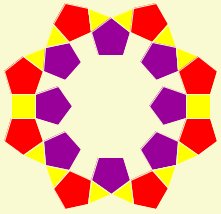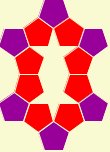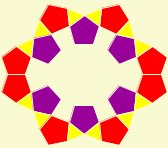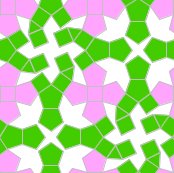
This pattern applies the concept of a five point star to heptagons. The five point star

can be constructed with a pentagon path that alternates a small turns to the right followed by a larger turns to the left. For heptagons, there are fourteen polygons instead ten. As well, the purple triangles and pentagons are added to the loop fourteen heptagons for decoration. I think that these extra polygons help bring out the symmetry.

 *
*  =
=  ...
... 








